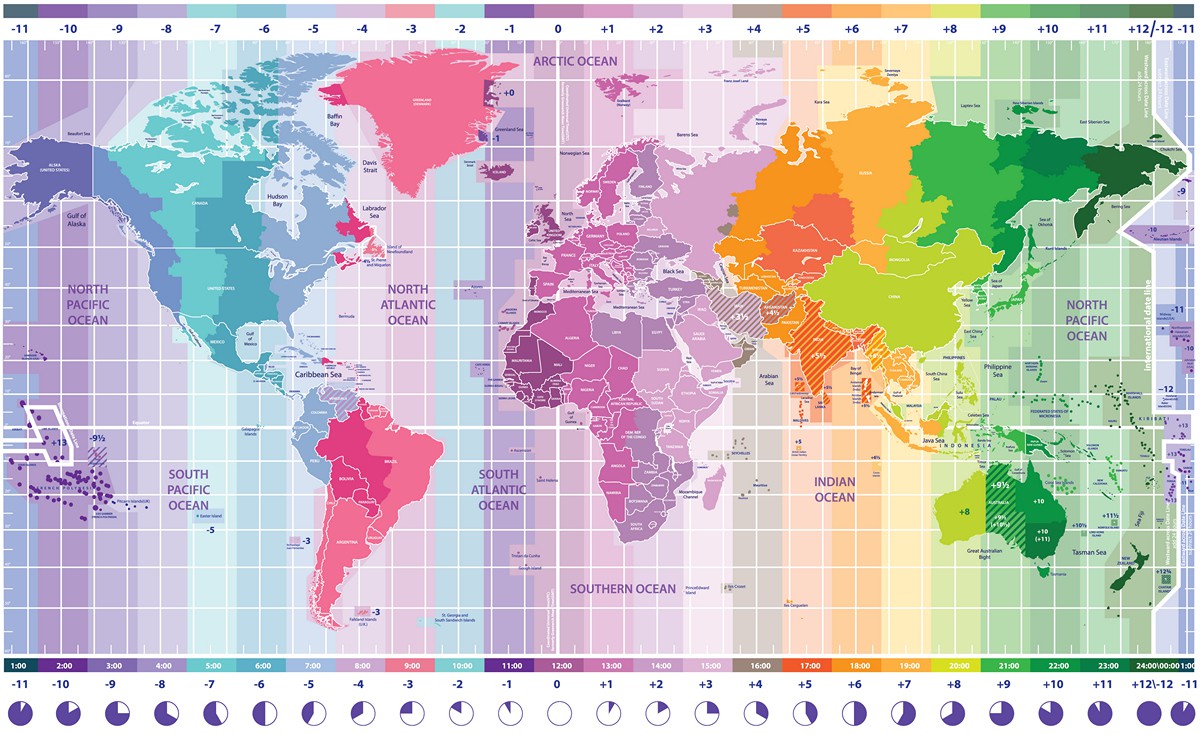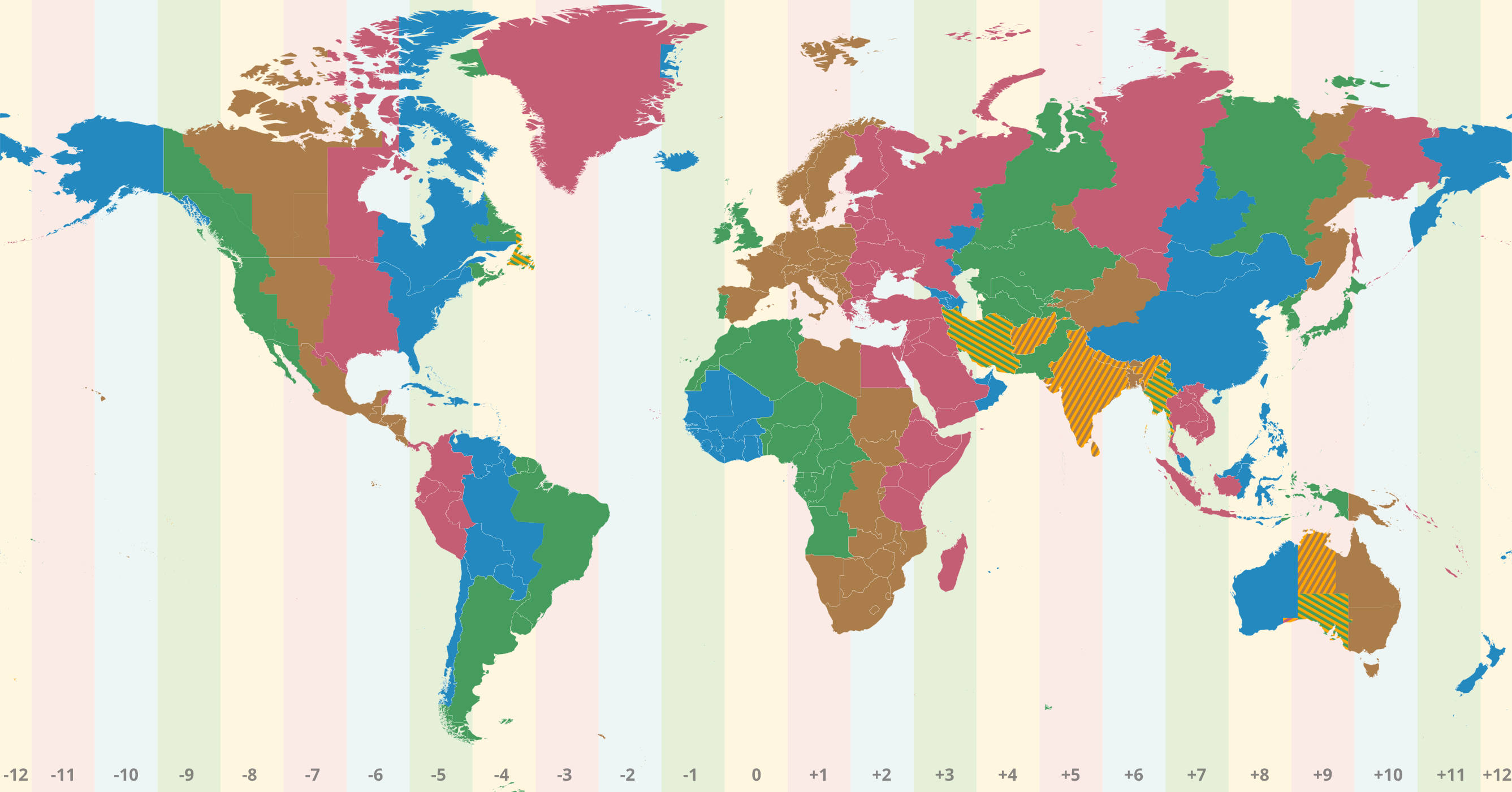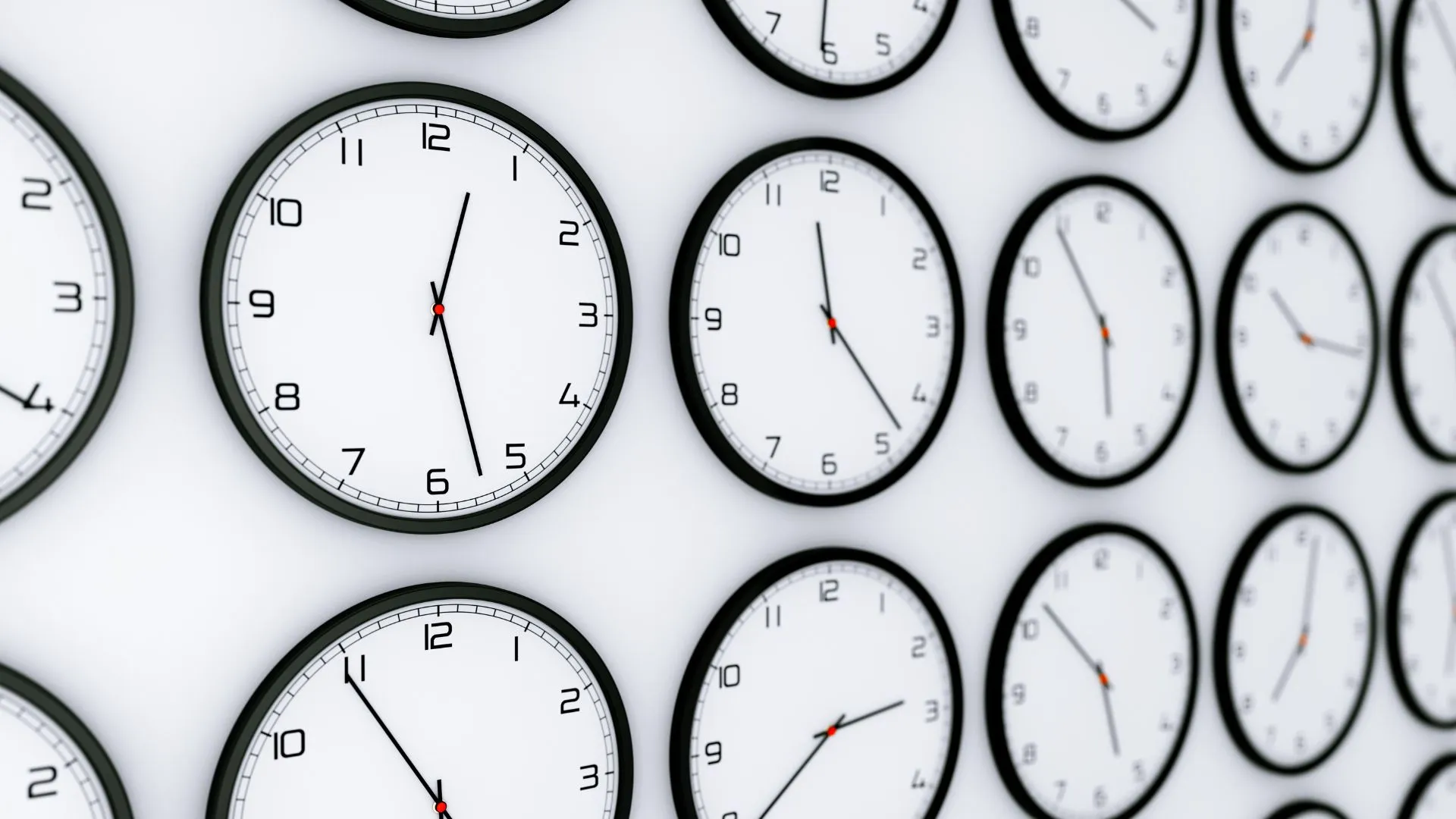Time zones: what they are, what they are for and how many there are in the world
Blog Sections
Time Zones: What They Are, What They Are For, and How Many There Are in the World
Time zones are a key part of organizing our modern world, yet many travelers don’t fully understand their purpose or how they function. Let’s dive into the fascinating world of time zones and learn how they work.
When you plan a trip or conduct international business, navigating time zones is an essential part of the process. Time zones determine when your meetings are scheduled, when flights depart, and even how you communicate with loved ones across the globe. Understanding time zones can make a significant difference in your travel plans, helping you avoid jet lag, missed appointments, or misunderstandings.
In this comprehensive guide, we’ll explore what time zones are, why they exist, and how they impact your daily life, especially while traveling. We’ll also break down the various time zones around the world, so you can plan your international adventures with confidence.
What Are Time Zones? The Basics Explained
A time zone is a region of the globe that observes a uniform standard time for legal, commercial, and social purposes. Each time zone represents a specific area that shares the same clock time, usually based on its position relative to the Earth’s longitude lines.
Pro Tip: The terms GMT (Greenwich Mean Time) and UTC are often used interchangeably, but UTC is the more precise standard used for modern timekeeping.
Why time zones exist: Time zones are a solution to the fact that the Earth rotates 360 degrees in 24 hours, meaning different parts of the planet experience daylight and darkness at different times. By dividing the world into time zones, each region can maintain a local time that corresponds more closely to the position of the sun.
How they are measured: Time zones are measured from the prime meridian, located at 0 degrees longitude in Greenwich, England. Each zone typically spans 15 degrees of longitude, representing one hour of time difference, either ahead or behind Greenwich Mean Time (GMT).
The role of Coordinated Universal Time (UTC): UTC is the standard time used across the globe to ensure synchronization. Many time zones are defined in relation to UTC, either as UTC+ or UTC-.

The History of Time Zones: Why Were They Created?
Before time zones were established, most towns and cities set their clocks based on the position of the sun, which meant every location had its own local time. As transportation and communication systems expanded, especially with the rise of the railroads in the 19th century, the need for a standardized time system became increasingly important.
Pro Tip: Time zones are a relatively modern invention, yet they have become essential for the functioning of today’s global society.
The rise of the railroad: In the 19th century, railroads made travel between distant locations much faster, creating confusion with local times differing by minutes or even hours. A standardized system was needed to ensure train schedules were coordinated across regions.
Sir Sandford Fleming’s solution: In 1878, Canadian engineer Sir Sandford Fleming proposed dividing the world into 24 time zones, each one hour apart from its neighbors. This system was adopted at the International Meridian Conference in 1884.
The birth of the Prime Meridian: During the same conference, the Prime Meridian, located in Greenwich, was established as the starting point for global time zones, which was crucial for navigation and global trade.

What Are Time Zones For? Why Do We Use Them?
Time zones serve several important functions, particularly in global coordination, travel, and communication. Without time zones, organizing international events, managing businesses across continents, and even taking flights would be chaotic and inefficient.
Pro Tip: When traveling, it’s a good idea to familiarize yourself with the time zone differences between your home and destination to avoid confusion and jet lag.
Coordinating travel: Time zones help airlines, trains, and ships maintain precise schedules. When you book a flight, for example, both the departure and arrival times are listed in local times for each airport, making it easier for travelers to understand when and where they need to be.
Global communication: Businesses operating internationally must consider time zones when scheduling meetings, making conference calls, or setting deadlines. Time zones help ensure that everyone is on the same page, regardless of location.
Local life: Within a time zone, residents have a consistent sense of time based on the position of the sun. Without time zones, the hours of daylight could vary wildly, causing disruption in daily routines.

How Many Time Zones Are There in the World?
There are 24 primary time zones in the world, corresponding to each hour of the Earth’s 24-hour rotation. However, some regions observe fractional time zones (offsets of 30 or 45 minutes), and countries may adjust their time zones for political, social, or economic reasons, leading to a total of more than 38 time zones globally.
Pro Tip: Always double-check whether your destination observes DST, as it can affect travel schedules, particularly during the spring and fall transitions.
Standard time zones: These are based on the 24-hour clock, where each zone is one hour apart from the next, starting from the Prime Meridian (UTC+0).
Fractional time zones: Some countries, like India (UTC+5:30) and Nepal (UTC+5:45), use time zones that are offset by a half-hour or 45 minutes instead of a full hour.
Daylight Saving Time (DST): Many countries adjust their clocks by one hour during the summer months to make better use of daylight. This creates temporary time zone changes, such as from UTC+1 to UTC+2 in regions like Europe.

Why Do Some Countries Have Multiple Time Zones?
Some countries are so large that they span several time zones. This is especially true for countries that stretch across significant portions of the Earth’s longitude. In these cases, the country is divided into multiple time zones to reflect the local solar time in different regions.
Pro Tip: When traveling in large countries, check the time zone for each region you’ll visit. Your flight could cross multiple time zones, making scheduling tricky.
The United States: The U.S. has six main time zones: Eastern, Central, Mountain, Pacific, Alaska, and Hawaii-Aleutian. This ensures that local time matches the daylight hours across its vast territory.
Russia: Russia spans 11 time zones, making it the country with the most time zones in the world. This reflects the enormous size of the country and the need for regional time consistency.
China’s single time zone: Interestingly, China uses just one time zone, China Standard Time (UTC+8), despite spanning five time zones. This means that in some regions, the sun rises and sets much later or earlier than in others.

The Impact of Time Zones on Travel: Jet Lag and Adjusting to New Time Zones
One of the biggest challenges travelers face is adjusting to different time zones, a phenomenon known as jet lag. Jet lag occurs when your body’s internal clock, or circadian rhythm, is disrupted by crossing time zones.
Pro Tip: When traveling east, it’s generally harder to adjust to the new time zone because you lose time. Try arriving a day early to give your body more time to adapt.
What causes jet lag: Your body is used to a certain routine based on your local time zone. When you fly to a different time zone, especially across several zones, your body may struggle to adjust to the new light and sleep patterns.
How to reduce jet lag: You can minimize jet lag by gradually adjusting your sleep schedule before your trip, staying hydrated during your flight, and exposing yourself to natural sunlight at your destination. Many travelers also use melatonin supplements to help regulate their sleep cycle.

Interesting Time Zone Facts and Anomalies Around the World
Time zones aren’t always straightforward. There are several fascinating quirks and anomalies in how time zones are applied around the world.
Pro Tip: When planning international trips, be aware of time zone anomalies, particularly when crossing the International Date Line. You could land “before” you took off!
The International Date Line (IDL): This imaginary line, located at 180 degrees longitude, marks the point where one day ends, and the next begins. Crossing the IDL can cause you to either gain or lose a day, depending on the direction of travel.
The Chatham Islands: These islands in New Zealand observe a time zone that is 45 minutes ahead of the rest of the country, making them one of the few places with a 45-minute time offset.
The Kiribati time zone change: In 1995, the Pacific island nation of Kiribati moved its time zone forward by 24 hours to be on the same day as its economic partners, effectively shifting its position relative to the International Date Line.

How to Easily Track Time Zones: Tools for Travelers
Tracking time zones can be challenging, especially when coordinating with people or events across multiple regions. Fortunately, several tools and apps make managing time zones much easier for travelers.
- World clock apps: Both iOS and Android offer built-in world clock apps that let you see the time in multiple locations at a glance. You can customize your clock with cities you plan to visit or interact with frequently.
- Time zone converters: Websites like TimeAndDate.com and WorldTimeBuddy.com allow you to compare time zones and plan meetings or travel itineraries accordingly.
- Flight planning apps: Many travel apps, such as Google Flights or Skyscanner, automatically adjust flight times to the local time of each airport, making it easier to understand your schedule.
Pro Tip: Set your phone to the local time zone of your destination upon landing to help your body adjust and prevent confusion during your trip.

Conclusion
Time zones may seem like a simple concept, but their impact on travel, business, and communication is profound. Understanding how they work—and how to navigate them—can enhance your travel experience and ensure smooth international coordination. Whether you’re crossing borders for business or pleasure, keeping track of time zones is essential for staying on schedule and avoiding jet lag. So, the next time you board a plane or schedule an international meeting, you’ll have the knowledge you need to manage time zones like a pro. Safe travels!

You may also be interested in
How to Avoid Tourist Traps and Still Enjoy Unmissable Activities
Traveling is about discovering new places, indulging in local cultures,…
How to Avoid Common Travel Scams When Booking Unmissable Activities Abroad
Traveling is one of life’s greatest joys, but encountering scams…
How to Stay Safe While Enjoying Unmissable Adventure Sports Around the World
Adventure sports are the ultimate way to feel alive—offering thrills,…
Hotels in Geneva: Popularity
| Hotel | Stars | Discount | Price before and discount | Select dates |
|---|---|---|---|---|
| ibis budget Geneve Palexpo Aeroport | ★ | - | - | View hotel |
| ibis Styles Genève Carouge | ★★★ | - | - | View hotel |
| Hotel Rotary Geneva - MGallery | ★★★★ | - | - | View hotel |
| ibis Genève Centre Nations | ★★★ | - | - | View hotel |
| Mövenpick Hotel Geneva | ★★★★ | - | - | View hotel |
| VISIONAPARTMENTS Geneva Gare | ★★★ | - | - | View hotel |
| Kipling Manotel | ★★★ | - | - | View hotel |
| N’vY Manotel | ★★★★ | - | - | View hotel |
| VISIONAPARTMENTS Geneva Mont-Blanc | ★★★ | - | - | View hotel |
| ibis Styles Geneve Palexpo Aeroport | ★★★ | - | - | View hotel |



